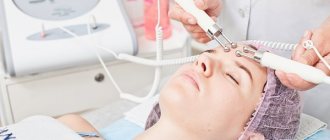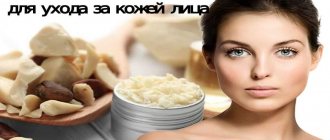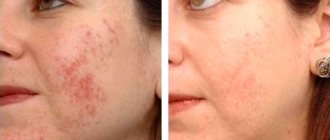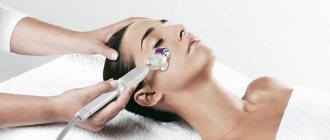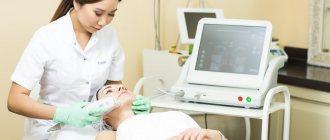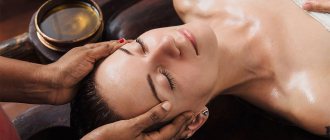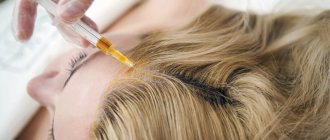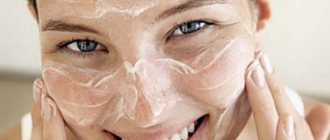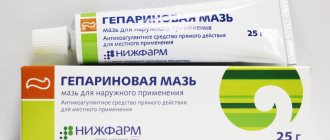Where is topical anesthesia used?
Most often it is used for pain relief when puncturing the skin during catheter insertion, injections, blood sampling, as well as in the following areas of medicine, such as:
- dentistry (for removing teeth and tartar, to relieve the gag reflex during procedures);
- surgery (for superficial surgical interventions. For example, when harvesting a flap for skin grafting, during mechanical cleaning of trophic ulcers);
- dermatology (for removal of molluscum contagiosum);
- cosmetology (before tattooing, hair removal, mesotherapy, laser therapy);
- gynecology (for removal of condylomas);
- pediatrics (for blood sampling, vaccinations).
Contraindications to pain relief with ointments
The main contraindications include:
- allergic reaction to drug substances;
- taking other medications in which lidocaine is the main component;
- pregnancy and childhood.
Creams that are not officially registered can be hazardous to health. They have an unknown composition of origin. Before using such a product, it is necessary to consult a specialist and conduct an allergy test.
Lidocaine spray and EMLA: what is the difference?
The drugs differ in composition. If the spray contains only one substance - lidocaine, then EMLA cream contains lidocaine along with prilocaine.
Lidocaine and prilocaine belong to the class of amides of intermediate action. Their effect lasts on average 1-1.5 hours.
The anesthetic effect of lidocaine is 4 times higher than that of novocaine. It does not penetrate well through the surface epithelium of the skin. Therefore, the spray is more often used when performing manipulations on the mucous membranes - there the effectiveness of pain relief is higher.
Prilocaine is slower but longer acting than lidocaine and is less toxic. The combination of two anesthetics in EMLA cream allows you to prolong the effect of the drug and provide it with additional functions. For example, with ELMA the depth of pain relief depends on the duration of application, while with lidocaine spray the effect extends only to the superficial layers of the skin and then only when additional conditions are created (applying a patch or film that prevents moisture evaporation). Thus, the cream is suitable for both procedures performed on the skin and those performed on the mucous membranes.
The use of anesthetic ointments in cosmetology
Anesthetic ointment in cosmetology is effective compared to anesthetic tablets. After all, the latter affect the entire body, and the ointment only affects the place of application.
Anesthetic ointments are used for:
- Sugaring. Destruction of hair in any part of the body using sugar caramel.
- Electrolysis. Removing unwanted hair by destroying its follicle with a weak electric current.
- Photoepilation. A process for removing unwanted hair with a prolonged effect.
- Laser therapy. The method relates to physiotherapeutic, and is based on the use of radiation in the optical range, which is generated by a laser.
- Mesotherapy. An injection method of introducing hyaluronic acid and vitamins under the skin.
The choice of anesthetic ointment depends on the following factors:
- on the area of treatment and the person’s pain threshold;
- from the presence of contraindications;
- from chronic diseases;
- from the medications used.
It is important to pay attention to effective and safe products. The drug should not cause additional stress on the central nervous system and heart. By using an anesthetic cream, you can relieve discomfort and reduce the risk of complications. This will allow the procedure to be carried out on the selected area of the body painlessly. Specialized products are applied to the face, neck or décolleté.
Main stages of the procedure
A course of mesotherapy should begin with a preliminary consultation with a specialist. A professional cosmetologist with a medical education will help determine indications, contraindications and possible risks. During a detailed conversation, the necessary components for the meso-cocktail and the method of administering the drug are selected.
In addition, a specialist can give you recommendations on how to prepare for therapy. Before the session, you should give up alcohol and aspirin, because they negatively affect blood viscosity and the absorption of injected substances. However, such a rule is not mandatory and remains at the discretion of potential patients.
During the procedure, the skin is treated with an antiseptic composition. Most often, an alcohol solution or a drug called Miramistin is used for these purposes. After this, an anesthetic cream is applied to the problem area, which penetrates the pores and minimizes the discomfort from injections to a depth of 3-5 millimeters. After about 10-15 minutes, the cosmetologist begins manipulations according to a pre-agreed scheme.
Numerous injections are carried out within 30-40 minutes, the duration of exposure is determined by the number of injections and the size of the problem area. At the end of the session, the patient leaves the clinic and returns home. The rehabilitation period does not require hospitalization or bed rest; the patient can freely go about his business, observing a set of basic rules, which boil down to:
- limiting visits to solariums, baths, saunas;
- protecting the problem area from direct sunlight, exposure to low or high temperatures;
- treatment of skin punctures with Miramistin in the presence of inflammation;
- ensuring a flow of fresh air to the treated surface;
- compliance with hygiene rules.
Method of applying anesthetic ointments
Anesthetic ointment in cosmetology is used as follows:
- First you need to clean the desired area of skin.
Before using pain-relieving ointments in cosmetology, you need to clean the skin area. - Then apply the cream with a cotton pad in a thin layer of 2 mm and distribute evenly with your hand over a certain area.
- Wait about 1 hour.
- Remove cream.
Don't miss the most popular article in the section: Fashionable haircut for short hair. Photo, front and back views.
Types of anesthetic ointments for the face and body, their composition
You can buy a cream with an anesthetic effect at any pharmacy.
Among the wide variety of such means are:
- Freezing drugs. They perfectly anesthetize the skin due to their direct functions, but do not completely relieve pain, since they do not penetrate deep into the skin. Often these drugs are used at home. The products include Prilocaine and Lidocaine.
- Products containing a complex of anesthetic substances . To enhance the analgesic effect, manufacturers combine several active components of painkillers in one preparation. Thanks to this combination, you can achieve a long-lasting and quick effect.
Traditional methods
Such a phrase as “chemical components” does not cause harm to the skin and the body as a whole, if you follow the recipe for preparing the mixture:
Rivanol
A simple and effective method based on the drug Rivanol. To remove hair, you need to take this medicine and dilute it in a ratio of 1:1000. Moisten a cotton pad with the solution and wipe the skin. After a few days, the hairline will become thinner and the hair will not grow.
This method is quite safe and there are no burns after it.
Soda
It will take 1 tsp. Dilute regular soda in 1 tbsp. boiling water After the mixture has cooled, you need to wet a cotton swab with it and apply it to the skin area and leave it overnight. This procedure must be carried out day after day and within a few days the hair will begin to fall out.
Ant oil
This drug effectively fights unwanted body hair. It penetrates into the hair, which eventually becomes weaker, its growth slows down, and it stops growing. With constant use, the oil destroys the hair follicle and the hair disappears forever.
In addition, the drug is a wonderful antiseptic after the hair removal process and prevents hair from growing into the skin. The drug is applied to the skin for a few minutes and washed off with warm water. For maximum effect, the drug is mixed in equal proportions with turmeric and lemon juice.
Hydrogen peroxide
Due to the drug, the hair will become thin, and the problem of removal will disappear on its own. This process is used by those who want to get rid of facial hair. It is necessary to wipe the skin with this preparation several times a day.
To painlessly get rid of unwanted hair on the body, even in particularly delicate places, you should use pain-relieving ointments, widely used in cosmetology.
Article design: Oleg Lozinsky
Top products, according to cosmetologists.
It is recommended to consult a specialist before using any anesthetic, since almost all anesthetic creams have a list of contraindications. Most often, reviews of pain relieving creams are not enough to make a purchasing decision. In any case, it will be useful for us to pay attention to the following components:
• If you have allergies or individual intolerance to the components of the product. Some components, in particular lidocaine, can cause severe allergic reactions. In this case, a patient with lidocaine intolerance should not use drugs containing it. As a rule, if a person has some kind of intolerance, then this can be detected in childhood, and in adulthood one must be more careful.
• Exposure time (speed of exposure of the cream). This information will be useful to you to plan the time of the entire procedure, since external anesthetics are applied before the procedure 15-40 minutes, depending on the drug.
• Cream texture. This may also affect the effectiveness of the procedure itself and the skin's reaction to the drug. Typically, a water or oil base can be determined by its composition. Water-based products contain water.
Next, we will analyze the top products for cosmetic procedures, which have long been leaders in the effectiveness of their effects and are widely known throughout the world.
Progelcaine gel 30g 9.6%
Local coolant made in Korea. Very effective, has a gel texture, used for cosmetic injection procedures, depilation, and other traumatic manipulations. Sold in tubes of 30g and 75g. Apply externally 15-40 minutes before the procedure under the film.
J-CAIN 500g
Korean cream painkillers, sold in 500g volumes, are intended for primary superficial anesthesia. Sold in blue and yellow cans. These are the most popular Korean skin freezing products today. It is very important to pay attention to the manufacturer and the content of lidocaine in the preparations. The yellow can contains 10.56% of the active ingredient, the blue can contains about 9.6%. Moreover, the effects of these two drugs are equally effective. There are slight differences in perception associated with the individual characteristics of the body. The cream is applied 15-25 minutes before the procedure under the film.
Lightfrost gel 30ml, 150ml, 400ml
A very effective product made in Russia, suitable for skin anesthesia when removing hair on the face, legs, armpits, and intimate area. It freezes the skin well, is sold in a large bottle with a dispenser, there are also mini versions of 30 and 150 ml. 150ml also comes with a dispenser. The cream quickly acts on the skin, creating a temporary sensation of freezing. With an exposure time of 20 minutes, it can freeze for more than 1 hour. There are contraindications, please read the instructions for use before use.
Cream Light dep professional 300ml, 30ml
Light Dep is the most famous skin pain relief cream with a good reputation. It is often used by masters of all areas of cosmetology, as it is a universal cream and is suitable for almost any procedure, for women and men. It also belongs to the primary cooling creams, that is, applied to intact skin. 15-20 minutes after application, the cream must be removed and the procedure must begin. Light dep professional is sold in 2 volumes. For cosmetology clinics, it is recommended to purchase 300 ml, it is much more profitable per 1 procedure, the bottle comes with a dispenser, the cream is stored for a long time while maintaining its cooling properties.
Soothing cream J-PRO 30ml
Korean cooling cream for sensitive skin. J-PRO is suitable for use on very delicate areas of the skin, as well as for people with a low sensitivity threshold. The cream perfectly cools and relieves discomfort; it is used with or without film, depending on the individual characteristics of the body. Apply the cream externally for 15-20 minutes. Suitable for mesotherapy, depilation, permanent makeup.
Cream Anestoderm 30ml, 300ml
Cosmetic soothing preparation for external use. Produced in Russia. This product is a modified formula of the usual Lightdep; the effect of the cream begins 15-20 minutes after application. Can also be used on intact skin before the procedure. For better effect of the cream, it is recommended to use a scrub and thoroughly clean the skin from the upper stratum corneum for better penetration of the product. When used correctly, the cream can provide pain relief for several hours; this time is enough for almost any cosmetic procedure to be carried out comfortably. To use the cream, a film is used; it inhibits the weathering of the cooling components, so the drug acts faster.
Let's compare these funds based on their main indicators
We decided to compare the products listed above based on their advantages and disadvantages. I would like to note that the opinion indicated in the table is subjective and may differ from the experience of some masters, therefore, before using each product, it is recommended to consult with a specialist. All data in the “price” line is current at the time of publication of the article. See the current prices for goods in the catalog or check by calling the phone number listed on the website.
| Name | Advantages | Flaws | Price |
| Progelcaine gel | Powerful cooling effect. | A water base is not suitable for all procedures. | 30g – 550r |
| J-CAIN | Economical consumption. One of the most effective pain relievers. | A large jar is not very convenient for daily use. Cannot be used on mucous membranes. | 500g – from 2000r |
| Lightfrost gel | Powerful cooling effect. Bottle with dispenser. | Do not use on damaged skin. | 30g – 800r |
| Light dep professional | Fast cooling. Bottle with dispenser. | Cannot be used on mucous membranes. | 30g – 800r |
| J-PRO | Suitable for sensitive skin. | Small volume. | 30g – 400r |
| Anestoderm | Fast cooling. Bottle with dispenser. | Cannot be used on mucous membranes. | 30g – 800r |
Contraindications to the use of anesthetic creams.
Below we have described general contraindications; it is also recommended to discuss your specific contraindications with a specialist. Creams should not be applied to open wounds, inflammations, burns and areas where there are scratches or any skin diseases.
• Lidocaine intolerance
• Pregnancy and lactation
• Presence of infectious diseases
• Age up to 18 years
Alcohol and local anesthetics
It is prohibited to drink alcohol before any anesthesia. Combining alcoholic beverages with such drugs causes bleeding and weakens the effect of the drug.
When drinking alcohol, the following reactions from systems and organs are observed:
- blood vessels dilate;
- blood clots form;
- muscle spasms appear;
- tachycardia appears;
- blood pressure rises.
Painkillers, like alcohol, are poisonous because they paralyze nerve fibers. For this reason, they are not compatible: the simultaneous use of two types of toxins leads to a negative reaction of the body.
Don't miss the most popular article in the section: Fashionable bangs of the new season for medium, short, long hair. Photo.
Mistakes before and after depilation.
When using painkillers, it is important to follow certain rules that guarantee a safe and lasting effect of the drug.
• It is not recommended to do depilation a few days before menstruation, as the body's susceptibility to pain increases significantly. We advise you to plan a visit to a cosmetologist a few days after the end of your menstruation.
• Do not drink alcoholic beverages before using anesthetic drugs. As a result of exposure to alcohol, the load on blood vessels increases and the sensitivity of the skin increases. In some cases, anesthetics may not provide pain relief at all.
• Particular attention should be paid to the master. Since comfort during the procedure also depends on the professionalism of the specialist and the depilation technique. We recommend that you familiarize yourself with the past works of the master.
• Before the procedure, be sure to degrease the area where the cream was used. Since especially oil-based creams leave behind a greasy residue, which can interfere with the tight adhesion of hairs to wax or spoil the quality of the applied components.
Precautionary measures
For hair removal and other similar cosmetic procedures, different types of products are used. This is not an advertising gimmick. All such drugs differ in composition. Therefore, if you apply mustache remover to your legs, you may not get a positive result. But if you do the opposite, you can get a severe chemical burn.
This is why painkillers are dangerous. Facial hair can be removed using any method, but if you choose a cream, you need to consider an ultra-gentle one. As for the feet, you need to buy strong concentrated medications and know the characteristics of your own skin.
A test must be performed before using anesthesia. Apply a little anesthetic to the exposed skin and wait a few minutes. If the skin does not turn red or develop a rash, then everything is fine. To avoid burns, after removing the drug, the skin area should be thoroughly rinsed with water and do not use cosmetics or perfume after this.
